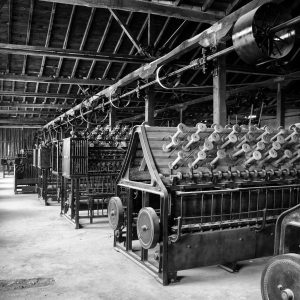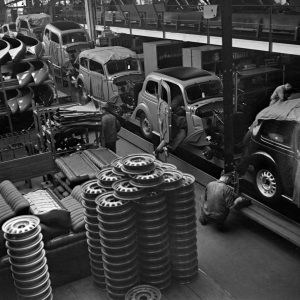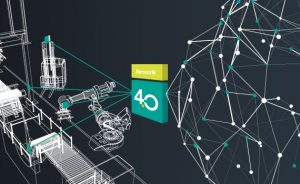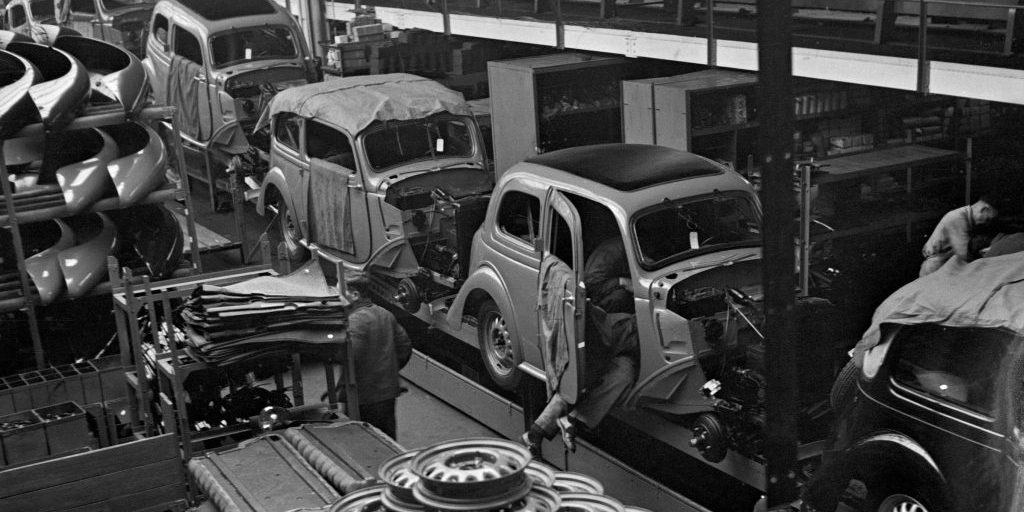What is Industry 4.0?
Content of This Article
What Is Industry 4.0?
Industry 4.0 is generally understood as the comprehensive digitalization of industrial production. In Industry 4.0, entire production processes are interconnected with people, machines, products, factory facilities, and logistics processes. Production speed is increased significantly. In this blog post, we give an overview of the past Industrial Revolutions that have brought us to this point and outline how Pepperl+Fuchs is involved in Industry 4.0.
From the First to the Fourth Industrial Revolution
Industry 1.0—Mass Production Powered by Steam
The First Industrial Revolution started in England in the late 18th century and marked the beginning of the move from manual production to the mechanical production of goods. In 1690, the French inventor Denis Papin patented the first steam engine based on a cylinder containing water and a piston. The piston was set in motion by heating and cooling the cylinder. But hydropower wasn’t widely implemented in production facilities due to its low energy efficiency. In 1776, James Watt significantly improved the efficiency of the steam engine, saving 60% in coal. This new discovery made it possible to initiate mass production in factories. New branches of industry, such as heavy industry, fabric production, and railway construction, were created.

Industry 2.0—Electricity and Assembly Lines

In the 1870s, electricity and combustion engines began to replace steam as the driving force in production. These new technologies, in combination with Henry Ford’s improvement of assembly line work, enabled mass production in factories. In addition, the invention of the alternator by Nikola Tesla made the electrification of cities possible. These advancements improved the quality of life for millions of people. For example, efficient light bulbs could now be used instead of gas lamps, and refrigerators replaced ice boxes. The invention of the diesel and gasoline engines was also one of the most important milestones in the Second Industrial Revolution. This enabled the development and expansion of the automotive and aerospace industries, making the world a little bit smaller by making travel more efficient.
Industry 3.0—Computer-Driven Automation
The Third Industrial Revolution, also called the Digital Revolution, began in the 1950s but had its beginnings in the 18th century with Charles Babbage’s Analytical Engine and the first theories on machine programming by Ada Lovelace. This digitalization of industrial processes further developed in the 1970s, which were characterized by a growing (partial) automation of work processes and an increase in the replacement of human labor by machines in series production. In the 1990s, the World Wide Web became publicly available. Soon afterwards, the internet and telecommunication industries exploded, further advancing machine communication in factories. Science fiction became reality after a computer defeated Garri Kasparov, the reigning world chess champion, in 1997.

Industry 4.0—Networking and Digitalization

In 2011, the term Industry 4.0 was first introduced by a German working group at Hannover Messe to promote its government-backed project of enhancing connectivity, computerization, and machine intelligence in manufacturing. In 2013, the Working Group on Industry 4.0 returned to Hannover Messe and presented official recommendations on implementing Industry 4.0 that it had prepared for the German Federal Ministry of Education and Research. Companies around the world continue to follow these recommendations as they create and implement Industry 4.0 technologies.
Pepperl+Fuchs sees Industry 4.0 as the future of fully networked production systems that is characterized by data exchange, within production processes and via the cloud, with higher-level information systems beyond company boundaries. Compared to the classic hierarchical communication strategies (horizontal, vertical), modern networked approaches allow communication to take place at any time between every participant and every hierarchical level.
This replacement of hierarchical machine communication by networked structures brings a valuable benefit: application data from field devices like sensors and actuators can be transferred directly to corporate IT systems without media discontinuity. Access to information about the performance and technical status of the machine and plant allows early intervention before failures or unwanted plant downtimes occur. The communication capability of the sensors required for this is a main feature of Sensorik4.0®—innovative sensor solutions from Pepperl+Fuchs for use in Industry 4.0 scenarios.
Subscribe to our newsletter and receive regular news and interesting facts from the world of automation.
